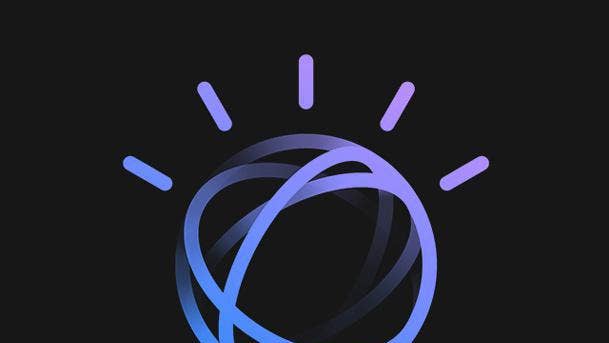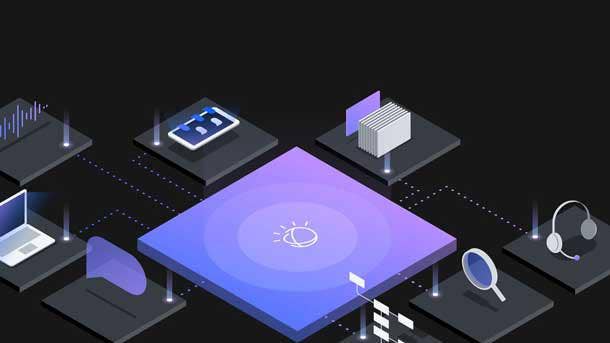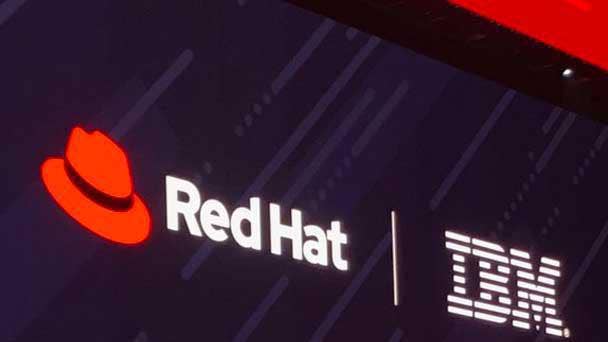IBM Exec: Watson Orchestrate, ‘Digital Employees’ Are Huge Opportunity For Partners
‘I would say partners play the biggest role in Watson Orchestrate because they are the folks who can really multiply the impact of Watson Orchestrate across enterprises or small businesses or individuals. ... “Automation has been there, but now it is taking it to the next level, which is automating the employee itself, which is the digital labor piece of it,’ Dinesh Nirmal, general manager of IBM Automation, tells CRN.
IBM’s upcoming artificial intelligence-powered automation offering Watson Orchestrate is an opportunity for partners to advance their practices around eliminating mundane work for customers’ employees and speeding up business processes.
That’s according to Dinesh Nirmal, general manager of IBM Automation. Nirmal told CRN in an interview that Watson Orchestrate and so-called “digital employees” are an opportunity for the Armonk, N.Y.-based tech giant’s partners because employers will continue to struggle not only to find highly skilled employees, but to pay them as well, resulting in a need to automate complex IT skills around cloud computing and 5G.
“I would say partners play the biggest role in Watson Orchestrate because they are the folks who can really multiply the impact of Watson Orchestrate across enterprises or small businesses or individuals,” Nirmal said.
“Automation has been there, but now it is taking it to the next level, which is automating the employee itself, which is the digital labor piece of it. And that’s where partners, everyone who’s talking about automation, can come in and play a huge role,” he said.
[RELATED: IBM Spends Up To $2B To Buy Turbonomic In AI Push]
IBM will expand its access beyond preview on June 30 with some partners already exploring the possibilities of incorporating digital employees in their business. IBM will start inviting customers to use Orchestrate on June 30, but the software won’t be generally available just yet, according to the company.
Angela Hood, CEO and founder of Austin, Texas-based IBM partner ThisWay Global, told CRN that her company uses IBM automation software to integrate the company’s human resources recruitment technology into customers’ existing environments.
“I think that’s the part that got missed in the conversation about AI,” Hood said. “There is this whole argument of, ‘Is AI going to replace people?’ Nope. But if you’re a person that does not use technology to do a better job and to stay with the company, you might just get replaced by a person that does.”
IBM’s investments in automation include the recent acquisition of Boston-based application resource management (ARM) and network performance management (NPM) software provider Turbonomic.
IBM is hardly alone in exploring new ways for automation to improve work. In March, Chicago-based Microsoft and AWS partner Asperitas Consulting made its proprietary application modernization accelerator framework available for large and midmarket businesses to speed up cloud infrastructure adoption.
That month, ServiceNow released the first of its two major biannual upgrades of its Now platform featuring a significantly enhanced graphical user interface for improved productivity as well as new robotic process automation capabilities.
Here’s what else Nirmal had to say about the opportunity for IBM partners in automation.

During Orchestrate’s preview period, have you seen opportunities for partners?
Let me answer your question in two ways. First one is the opportunity that exists. I mean, there’s a tremendous opportunity for automation. And if you look at IBM’s recent earnings, software automation grew double digits. That’s because of the opportunity that our enterprise customers see from an automation perspective.
A few things are driving it. One is the skills gap. There’s a huge gap of skills that our customers are facing along with the mass resignation and everything else that is going on.
The second is the complexity that comes with the legacy system, the hybrid cloud and everything else that’s going on, the complexity that brings.
The third one that I’ve heard many of the customers talk about is their growth … it’s driven into the double digits, triple digits, they cannot hire people fast enough.
And what do they do? They have to automate or find a way to get a digitization done so they can really grow at the pace that they have to.
And then there’s inflation. You can see that wage inflation is going to be a key player over the next few years. Surrounding all of this, automation has the tailwind because every enterprise wants to automate. So that’s the context. But then you look at Watson Orchestrate.
Watson Orchestrate is all about providing digitization or digital labor or a digital assistant or however you want to call it. So when I look at an employee, there are three core elements to it.
One, the credentials, I call it. Two, the persona. And three, the skills.
So those are the three things any employee has. If I take myself as an employee, I have credentials to log on to certain systems or credentials to do certain things.
I have a persona—who am I within that enterprise? Who am I connected to? Who do I report to? All those things are within the persona.
The third one—the most critical piece—is skills. What skills do I have to really do that job? Watson Orchestrate is focused on those three things.
And how do we take those skills—and skills could be bots, skills could be workflow, skills could be an API call—you take that and not only do you have to just execute it, you’ve got to execute in a sequence.
So you need an AI engine to say, ‘What is the confidence level of this particular skill that these are the skills that need to be executed?’
And not only that this particular skill, which is skill A, needs to be combined with B, C and D and has to be executed in that sequence. So that’s what Watson Orchestrate does. … If I’m an SI [systems integrator] or a GSI [global systems integrator or a VAD [value-added distributor] or a VAR , any of those partners, it’s such a great opportunity to go build those skills.
So if I take HR as a discipline or finance as a discipline, how do I build those skills and then use Watson Orchestrate to really orchestrate, sequence and deliver those skills so that I can really create a digital employee for your enterprise?
I think that’s where the future is going to be. It’s all going to be digitization of the labor force. And that doesn’t mean that we are going to eliminate the employees. We are going to augment [them] so they can go do high-value tasks.
But also it goes back to my point where customers cannot hire fast enough to deal with their growth. I mean, look at the telecom orgs. Their 5G growth. How do you deal with that? You look at some of the retailers, their online growth. You cannot hire fast enough. So you are going to want to do digital employees, and I think Watson Orchestrate is perfectly situated for that. … The digitization is happening, and it‘s happening at a very fast pace.
But I think the next phase, you look at bots … what it can do for the future, meaning automating, being able to digitize, that’s the power of it.
But not only taking the bots—being able to sequence those bots with the workflows, with the rules, all those things become very critical for a company or an enterprise to have a digital employee.
And I think that’s where the future is going to be. I think the manpower of today will turn into a digital manpower where I can go say, ‘Look, this week, I need these five skills. Can I get them digitally to go execute what I need to get done?’
And I think there is going to be a path towards digitization of employee and labor.

What are some use cases you are seeing for Watson Orchestrate and automation?
If I look at the labor side of things, it’s not going to be a generic one—meaning like you create a process mining tool. A process mining can be used across any processes to mine the logs to say, ‘OK, this is the process that’s most vulnerable to automation, and let’s automate it.’
You create a workflow tool, you can use a workflow tool against any discipline. I think a digital employee is not that way.
The reason I say this—there are specific skills, meaning a digital employee for HR is going to have different skills than a digital employee for finance, will have different skills than for a digital employee for insurance, for example.
So it’s going to be a vertical-based skill set that you have to create. And these skills have been with people for a very long time, so it’s about extracting the skills and also bringing AI into it. … I would say digital labor or automation based on AI is where the future is going to go.
Now to answer your question—so let’s think about it. Today, an NLP [natural language processing]-based front end exists. I can have a chatbot when a request comes in. But it could come through an email, it could come through a voice.
It’s all about recognizing that and saying, ‘OK, what is the end user asking?’ So I could be saying, ‘Get me the latest report or my sales forecast for the next 30 days.’
Now, all of a sudden, that is a request that comes in, and then it’s taken and looked at from a sales perspective to say how many skills do I have to answer that query? That’s the first thing that needs to happen. And that’s why I said, even these skills have to be put together in a way that’s very vertical or industry-specific.
So from a sales perspective, maybe 10 skills could raise hands and say, ‘Hey, I have that skill to answer that query.’
And then it’s all about bringing the confidence level to say, ‘OK, you said—what is your confidence level? I have a 96 percent confidence level that I can answer that query.’
But it’s not just about answering that query because in the back end you’ve got to connect to a sales force system, extract that. You need to have email skills because you might have to email it somewhere.
And then it’s not only an email skill. That’s where another role like iPaaS (Integration Platform as a Service) comes in because now you have to connect to different systems and be able to extract data from there or insert data into there and then generate it as a PDF, send it as an email, and make sure it all goes. And that’s why the sequencing matters.
So to answer your question, I would say I can take any example like Watson Orchestrate is being used in IBM HR today to decide the bonus level based on the performance of an employee.
I mean, think about it, we had to have someone go do that manually … but end to end, it’s taken care of. And we are trying to expand it across IBM HR in many disciplines.
So I would say it depends on the discipline, but we are already using it. My goal is that over the next three to five years, democratize it. Meaning make it available to everyone you know.
I’m a mom-and-pop shop, I want to have a digital assistant to do all the mundane tasks that I do but I don’t have the resources to go hire someone. How wonderful it would be for me to have as a printing shop or a bagel shop to be able to use what an enterprise has the capability and the resources to go do it.
So my goal is not only to bring Watson Orchestrate for the enterprises, but how do we make it easy and simple enough that you can easily build a skill, you can put it into a catalog and then Watson Orchestrate can see all those skills and execute and sequence it?
So if you ask me, one, bring that to the enterprises at the level of scalability, security and all those things on a vertical aspect.
But two, democratize it, meaning bring it as a service that anyone, everyone can come and use it and build their own digital employee.

How will you go about democratizing digital assistants? What are some obstacles you are overcoming?
The channel has to work in this case because no one enterprise, no one vendor can build it alone. So the channel is the way to go, Meaning we all have to come together to build those skills to make it available.
Two, the obstacle, I would say the set of skills, making sure that we can build those skills fast enough for everyone to use it.
So it becomes more of a crowdsourcing, meaning Joe built a skill that Jane can use and Jane built a skill that Thomas can use. It has to come across that way so that it can be crowdsourced. … So the channel has to work. There’s got to be enough and more skills built.
And third is, I would say, having the skills itself to build the skills. There are certain aspects of a job that I hold that only I have the skills to do and I have to somehow digitize it. So that is the third roadblock, I would say. I have to create some level of my own digital assistant to really enable someone else to take advantage or benefit.
I was with their large telecom operator in Canada and their take was that this is great because, one, we have a skills issue that can be resolved with it. Two, we cannot hire people fast enough for the growth that we’re experiencing, so this will help us with that.
So from all that perspective, this is a great initiative for us to go, one, help from a digital labor perspective. But, two, help companies and smaller SMBs to grow faster with lower costs.
Are you working on a marketplace or repository for Watson Orchestrate capabilities?
Yeah, we have to, that’s the only way where we can really put the skills together. And anyone can come and experience those skills or use those skills and add back those skills.
Right now the thought process is like a catalog of skills. But then we want to expand it into a marketplace by which customers and individuals can come in to use it.

What is your advice to partners at this time?
If I look at the partners, more from the GSIs and maybe some level of VARs, I would say that automation has been happening for decades. … Anything that doesn’t involve human touch has been automated. That’s the assumption we have to make.
But then there is an element whereby a human touch is involved. And that’s why RP [robotic process] and all that took off because that’s where a lot of focus has been in the last few years—how do we automate that?
So that’s also getting automated, but now what is left? What is left is automating to some extent, yourself— meaning your skills. And that’s why I’m really excited about it because whatever doesn’t have human touch has been automated. Wherever there is human touch is being automated using RPA [robotic process automation], AI … all those things.
But then there is a persona that exists today that hasn‘t been automated, which is the employee itself. And that’s where the automation of digital labor and digital employees come in.
So if you ask me from a partner perspective, of course they all have been having an automation practice, which is focused on automating the processes, the line of business, finding the right process to automate using process mining, automating bots for mundane tasks on a day-to-day basis using RPA bots.
And IT is getting into automation using AI and problem determination, all those things. So the automation has been there, but now it is taking it to the next level, which is automating the employee itself, which is the digital labor piece of it.
And that’s where partners, everyone who’s talking about automation, can come in and play a huge role. ‘How can I help? How can I help digitize the labor force and really move folks into high-value tasks, free up their time, and also help companies—especially small companies—from a resource perspective, from a skills perspective, from an inflation perspective, to really grow exponentially?’ … What are the obstacles? I would say partners play the biggest role in Watson Orchestrate because they are the folks who can really multiply the impact of Watson Orchestrate across enterprises or small businesses or individuals.
They will have the skills to go come and do it, whether it’s HR vertical, finance vertical, insurance vertical.
They have been working with these individuals for decades. They can bring in those specific skills and build these skills for Watson Orchestrate and then Watson Orchestrate can take care of the rest.
So it’s ahuge opportunity for partners here. Huge opportunity. And I cannot emphasize it enough, but the future is going to be all around digitization. It already is but it’s going to even take higher focus. But not only that, it’s going to be about digitizing the labor so that we can really tackle some of the issues that we are going to face over the next five to 10 years.

Is this also a good opportunity for Red Hat partners and those of other vendors?
The skills can be anywhere. If you look at Red Hat, they already do a lot of automation.
But within that automation, there’s Ansible and there’s other tools, (HashiCorp) Terraform and all those things, tools that help you automate.
But can we bring RPA in there? Can we put that as skills that can help do that?
Even public cloud, there’s a huge opportunity there. Many of the things that you do—you want to delete something, provision something or suspend something that you’re not using the resources today, somebody has to do it.
Can we use that—create those as skills? … So there‘s a lot of opportunities across the board. I mean, Red Hat is one of them. Of course, there’s a tremendous amount of opportunity for Red Hat and its partners to come and use Watson Orchestrate.